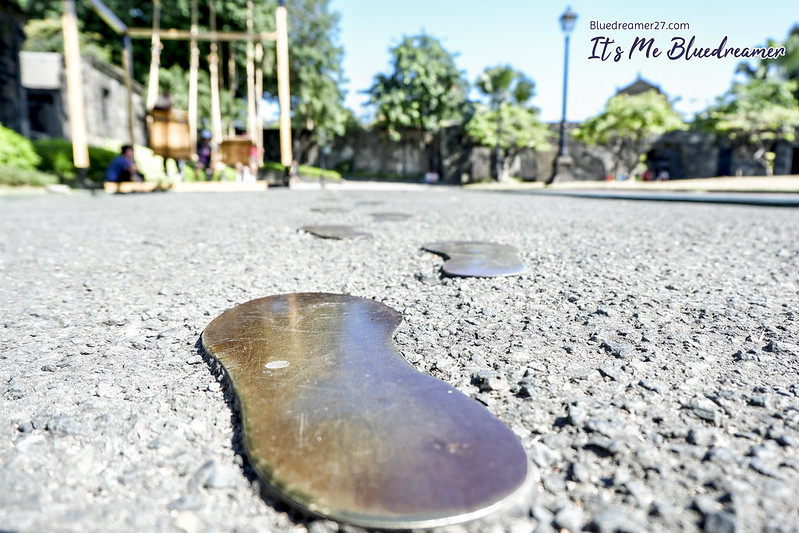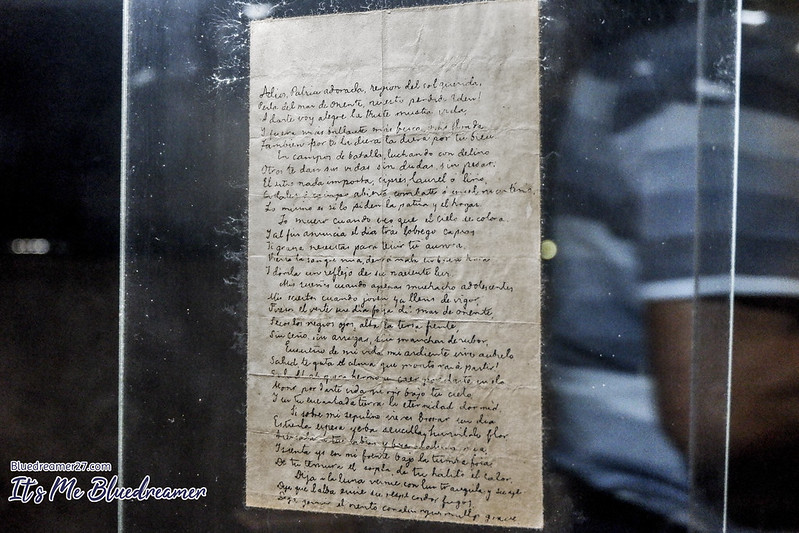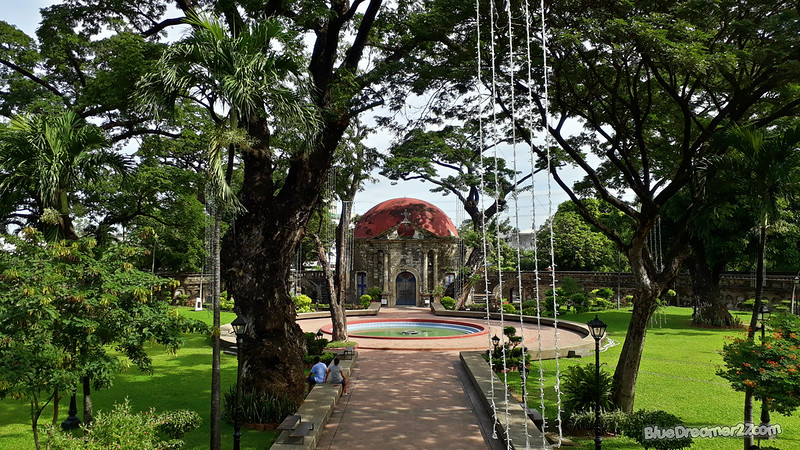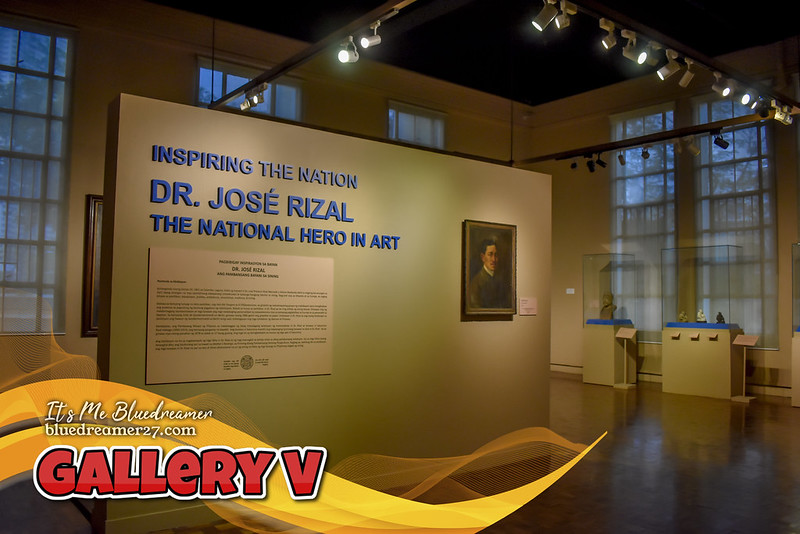Today marks the 126th death anniversary of our national hero, Dr Jose Rizal. It was on this day, December 30 of 1896 when Rizal was executed at Bagumbayan (now known as Rizal park). Rizal Day was first instituted with a decree by President Emilio Aguinaldo issued December 20, 1898 and celebrated December 30, 1898 as a national day of mourning for Rizal in Malolos and all victims of the Spanish colonial rule of the Philippines. Rizal Day ceremonies are held at Rizal Park in Manila. This is usually held early in the morning, led by the president and vice president, and involves the raising of the national flag at Independence Flagpole, followed by a flypast by the Philippine Air Force and the laying of a wreath at the Rizal Monument.
In celebration of Rizal Day, we listed down various places that commemorates with our National hero. These are sites that either pay tribute to Jose Rizal or places that play huge significance in his life.
Photo Credit : Dave’s Travel Corner.
Rizal Shrine in Calamba, Laguna
Rizal was born in Calamba on June 19, 1861. The original ancestral house was built by Rizal’s father, Francisco Rizal Mercado. The house was confiscated by the Spanish in 1891 before being reoccupied by Paciano Rizal during the Philippine Revolution. It was utterly destroyed during the Second world war. The government eventually bought the remains and started the reconstruction in 1949 with Juan Nakpil as the supervising architect. While the building is already a reproduction, it remained faithful to the original home, providing accurate representation of the home Rizal grew up. Not too far from the site is Saint John the Baptist Parish where Rizal was baptized.
Photo Credit: Wikipedia
Rizal Park and Shrine in Dapitan
Jose Rizal Memorial Protected Landscape or simply Rizal Park and Shrine in Dapitan in Mindanao is the site were Jose Rizal was exiled for four years from 1892 to 1896 after being accused of sedition and plotting the Philippine revolution in Manila by the Spanish colonial authorities. This protected landscape was established in 1940 as the National Rizal Park which currently covers 439 hectares of land. The area occupies a hilly peninsula facing the Dapitan Bay in Zamboanga Del Norte. Rizal built houses in the site, started a farm, put up a school for boys, and built a hospital where he could practice medicine and treat the poor for free. For four years, he worked as a rural physician, farmer, merchant, inventor, painter, sculptor, archaeologist, linguist, teacher, architect, poet, biologist and environmentalist. The site features five reconstructed houses of bamboo and nipa originally built by José Rizal.
Rizal Park or Luneta Park in Manila
Rizal Park or Luneta National Park or simply Luneta is one of the largest urban park not just in the country but also in Asia. With 140 acres of land, your whole day is actually good enough just to explore this place. Located here is the iconic monument that was built to commemorate with our National Hero and his incomparable contribution to our country. It features a set of bronze sculpture of Rizal along with his family and comrades. The monument also houses his remains. Along with the sculpture is an obelisk with three stars on top to symbolize Luzon, Visayas and Mindanao. The monument depicts Rizal in overcoat holding a book, that represent his novels Noli Me Tángere and El filibusterismo.
Read more about Luneta Park here: Let’s Explore Manila: The Historical Rizal Park
Rizal Execution Site
Contrary to the beliefs that Rizal was executed on the site where the Rizal Monument is situated, our national hero was actually executed on a site just few meters away from the monument. A marker was placed on the actual site of execution and a set of oversized diorama were placed nearby depicting not just the execution scenes but the notable events in Rizal’s life. You will also be welcomed with impressive bronze sculpture depicting different events of Rizal’s life. The diorama and these sculptures were actually made by Eduardo Castrillo who is also behind some notable sculptures around Manila including the People Power Monument, the Bonifacio Memorial Shrine (Check : Bonifacio Memorial Shrine) and that Historical Bridge in Zapote (Check : Battle of Zapote Bridge).
Read more about the Execution site here: Let’s Explore Manila: The Rizal Execution Site
Fort Santiago
Fort Santiago is one of the oldest fortifications in Manila which was built in 1571. The first fort was built from logs and earth but was destroyed in Limahong Attack in 1574. The Stone fort was built between 1589 to 1592. Much like any of the defensive structures in Intramuros, the Fort Santiago was also destroyed during the Battle of Manila. Many people were imprisoned here during the Spanish period and the second world war including Jose Rizal before his execution. Once you entered the Fort Santiago, the first thing you will notice are the metal footsteps. These footsteps were used to represent the final walk our national hero from his cell to the location of the actual execution.
Read more about Fort Santiagio Here: Let’s Explore Manila: Fort Santiago
Dambana ni Rizal in Fort Santiago
The Shrine is located within Fort Santiago, just few meters away from the Rajah Sulayman Theater. Interestingly, the Shrine is a museum that is dedicated to the lifework of our national hero. It is very important to note that this is the exact place where he was imprisoned and spent his final night before his execution. The museum houses several memorabilia as well as items with very huge historical significance. Currently, there are six galleries in the museum with each features different themes and relics reflecting the life an achievements of Jose Rizal. The Museum was built in 1953 and was renovated in 1996 as part of the Centennial celebration of Rizal’s martyrdom and the Philippine revolution. Another interesting piece that is absolutely worth-seeing in this shrine is the piece of Rizal’s vertabra on display. Of course, one of the things you should not miss when visiting Rizal Shrine is the original copy of Rizal’s last note before his death. Rizal hid the letter inside a small alcohol stove.
Read more about Rizal Museum here: Ten Things You Should Not Miss When Visiting Rizal Shrine in Intramuros
Paco Park and Cemetery
The Paco Park was once a cemetery. An order to construct a municipal cemetery was made after and outbreak of a cholera epidemic in Manila in 1807. The cemetery was primarily designed as a municipal cemetery for the affluent and established aristocratic Spanish families who resided in the old Manila, or the city within the walls of Intramuros during the Spanish colonial era. It is also interesting to note that the remains of our National hero, Dr Jose Rizal and the martyred priests (GomBurZa) ; Mariano Gomez, Jose Burgoz, andJacinto Zamora were all interred in Paco Cemetery. Dr Jose Rizal. Jose Rizal was secretly interred at Paco Park after his execution at Bagumbayan on December 30, 1896, and was guarded for fifteen days by the Guardia Civil Veterana. His remains were exhumed on August 17, 1898 and on December 30, 1912 was laid underneath the monument dedicated to him at the Luneta as stated in the Park’s marker.
Read more about Paco Park here: Let’s Explore Manila: Paco Park and Cemetery
National Museum of Fine Arts
The Gallery V of the National Museum of Fine Arts is dedicated to our National hero. Known as the Dr Jose Rizal Hall, the exhibit honors Dr Jose Rizal who aside from being a prominent doctor and write is also a skilled artist. The gallery highlights some of his works and other paintings and sculptures from various artists that features him. This includes the Oyang Dapitana sculpture (a sculpture made by Rizal while he was in Dapitan), San Pablo el Ermitaño, and more.
Read more About National Museum here: A Detailed Tour of National Museum of Fine Arts: Important Artworks and Galleries You Should Not Miss

